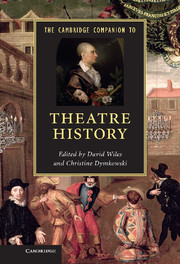11 - The audience
from Part IV - What?
Published online by Cambridge University Press: 05 February 2013
Summary
When in 1908 George Bernard Shaw was shown the new Royal Dramatic Theatre in Stockholm, he exclaimed that it looked like a palatial bank, though Shaw may not have been aware that in fact the building was financed by a private consortium of bankers and industrial leaders. The recently completed edifice looked like a palace: white with gilded details on the outside, white marble and colourful paintings in the foyer, and turquoise seats in the auditorium – all inspired by the fashionable art deco style of the time. The building was a manifestation of modernity and marked the beginning of European modernism in Swedish theatre. Furthermore, the Royal Dramatic Theatre was from now on organised as a joint-stock company, in which the state owned all the shares. How did these changes in an institution established in 1788 affect the audience of the new era?
Some days before the opening of the Marble Palace – as the citizens of Stockholm dubbed the building – a short announcement from the new management of the theatre appeared in newspapers. In a few lines the public was urged to refrain from the traditional end-of-scene applause and to restrict their clapping to the end of an act. What were the implications of this appeal?
The far-reaching significance of this insignificant little announcement, rarely observed in theatre histories, becomes obvious only in the light of audience behaviour in a wider perspective. I see this change of attitude towards the spectator around 1900 as a historical watershed at the rise of theatre modernism. I will briefly describe the spectators’ participation in performances of the nineteenth century and August Strindberg’s harsh opinion of the audiences of his day, before looking at the nature of spectatorship in some pre-modern performances. In the modernist era the audience was silenced, and its integral function as part of a public event was effaced, but theatre nevertheless continues to remain dependent on the close relationship between actors on stage and spectators in the auditorium.
- Type
- Chapter
- Information
- The Cambridge Companion to Theatre History , pp. 169 - 183Publisher: Cambridge University PressPrint publication year: 2012
References
- 3
- Cited by

